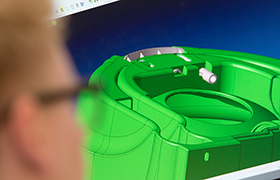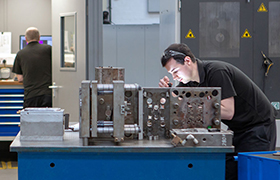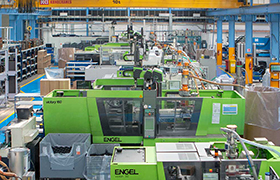MOULDING METHODS – COST COMPARISONS
Please Note: This page is for information purposes only. Rutland Plastics only offers Injection Moulding services.
Some plastic parts can be produced by a variety of different moulding methods. The decision on which method to use can depend on a number of factors with cost probably being the most critical in the majority of cases.
When considering cost all factors should be taken into consideration. It may be that a single injection moulded part could combine a number of parts produced by another method, or result in a simpler assembly process thereby reducing costs.
Other points to consider include the quality required for the finished part, the weight or dimensional tolerances needed.
Below is a basic comparison of the different processes:
| Method | Shape | Quantity | Mould Cost | Part Cost |
|---|---|---|---|---|
| Vac Forming | Simple open shapes | Small to medium | £ | ££ |
| Rotational Moulding | Simple and complex enclosed shapes | Medium | ££ | ££ |
| Blow Moulding | Complex enclosed shapes | Large | ££ | £ |
| Reaction Injection Moulding (RIM) | Relatively large, thick section parts | Small to medium | £££ | £££ |
| Injection Moulding | Simple and complex precision shapes | Large | ££££ | £ |
| Fabrication | Simple shapes | Small | – | ££££ |
Mould and part costs are indications only of relative values and may vary subject to size and complexity of parts.
Quantity refers as to what is considered to be normal for that method, however injection moulding can often be cost effective on relatively small quantities.
This is a simplistic overview and will vary dependent upon the part required. Not all methods are suitable for all parts. Some moulding methods are also limited in the materials that can be used and, therefore, the properties available. However, in most instances there will be a choice between at least two alternatives.






